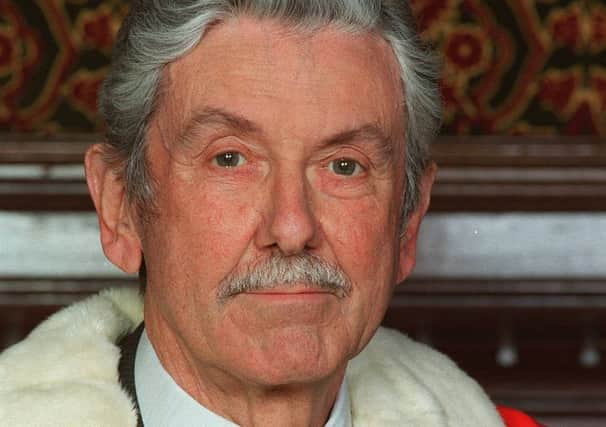Obituary: Robert Kilpatrick, Baron Kilpatrick of Kincraig


Robert Kilpatrick was a much-respected reforming president of the General Medical Council (GMC) from 1989–95 and was instrumental in encouraging doctors at all levels to listen to their patents. Indeed, he was a pioneer in the profession before he arrived at the GMC. In 1993 he published the first Tomorrow’s Doctors report, which provided a universal curriculum for medical students, recommending a greater emphasis on clinical and practical experience. It has influenced medical training worldwide.
Amongst his medical colleagues Kilpatrick was a towering figure in UK medicine and served with distinction as dean of two medical schools, president of the GMC and the British Medical Association.
Advertisement
Hide AdAdvertisement
Hide AdFinlay Scott, who was the GMC’s chief executive during Kilpatrick’s years, told The Scotsman yesterday: “Robert was an outstanding clinician and president of the GMC. It was his energy and drive that got the legislation through Parliament on performance procedures in the profession.
“He expertly gained cross-party agreement and thus improved clinical practice. It was a major improvement for the profession and it was good to see his tireless efforts rewarded.”
Robert Kilpatrick was an only child, born to a miner working in the Fife coal fields. Despite having suffered from TB as a youth, he was a star pupil at Buckhaven High School and had an alert and agile brain, and committed prodigious amounts of poetry to memory.
At 16 he won a scholarship to Edinburgh University to read medicine, and proved a most dedicated student, but he had to support himself and worked as a potato gauger (distinguishing genuine Arran Pilots from lesser tubers) and in local factories in the vacations. He was a hugely successful medical student, gaining the gold medal for top student and securing commendations for his training as a physician.
Kilpatrick was awarded a Rockefeller Fellowship for research at Harvard, which gave him a wider perspective of how the medical profession was changing in the 1950s.
He returned to the UK in 1955 and was appointed senior lecturer at Sheffield University and such were his abilities he was appointed (1970–73) dean of the Medical School.
Kilpatrick became the first dean of Leicester Medical School 1973, where his pioneering spirit and thirst to educate and improve methods were immediately recognised. He turned the fledgling school into a major force in the profession and it was soon hailed internationally.
Kilpatrick introduced a highly innovative medical course and through persuasion and charm found the funding to support the programmes. Over the ten years of his stewardship he furthered the role of research – notably genetic fingerprinting – and improved patient care in all the Leicester hospitals.
Advertisement
Hide AdAdvertisement
Hide AdKilpatrick had become so esteemed within the medical profession that he sat on several important advisory commissions. In 1989 he left Leicester to assume the post of president of the GMC.
His earnest desire to raise the profile and expertise of the profession never ceased. Many colleagues recall how he had the knack of choosing the right Whitehall mandarin to approach. With his erudite and compelling manner (always free of medical jargon) he delivered his case which was listened to by ministers and their advisors.
Baroness Jay, the Labour leader in the Lords, spoke for many when she said: “Sir Robert has been generous with his time and most courteous in answering detailed questions. In a way this bill is his Private Member’s Bill.”
This constant activity was achieved despite Kilpatrick suffering from type-I diabetes. He regularly had to inject insulin but he followed a strict exercise regime and walked everywhere both in London and Edinburgh.
He retired to a house in the west of Edinburgh from where he made occasional trips to London to speak in the Lords – principally arguing against euthanasia.
He was a member of Edinburgh’s New Club and an ardent member of the Royal & Ancient – which he loved for its friendship and tradition. He had been a lifelong lover of golf and for many years had a handicap in single figures.
Finlay Scott recalls: “I used to see Robert after he retired and he was always good company: he had a wicked sense of humour. I admired his commitment, his energy and his sincere determination to work for patients. He had an astonishing intellectual capacity and it was a privilege to work for him.”
Kilpatrick held several academic posts and doctorates from, amongst other universities, Edinburgh and Dundee.
Advertisement
Hide AdAdvertisement
Hide AdHe was a Fellow of the Royal College of Physicians of Edinburgh, was knighted in 1986 and created Baron Kilpatrick of Kincraig, of Dysart in the District of Kirkcaldy in 1996.
He married Elizabeth Forbes, whom he had met at a scout dance at school, in 1950. She, and their three children, survive him.